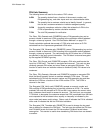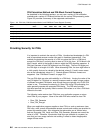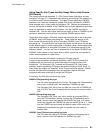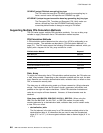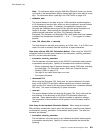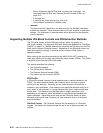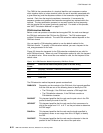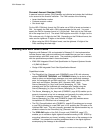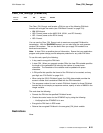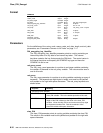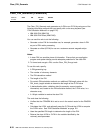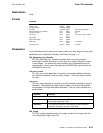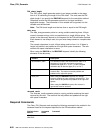
CCA Release 2.54
Personal Account Number (PAN)
A personal account number (PAN) identifies an individual and relates that individual
to an account at the financial institution. The PAN consists of the following:
Issuer identification number
Customer account number
One check digit.
For the ISO-0 PIN-block format, the PIN verbs use a PAN to format and extract a
PIN. You specify the PAN with a PAN_data parameter for the verb. You must
specify the PAN in character format in a 12-byte field. Each digit in the PAN must
be in the range from 0 to 9. The actual PAN might be more than 12 digits, but the
PIN verbs use only 12 digits for the PAN. Depending on the PIN-block format, the
verbs use the rightmost 12 digits or the leftmost 12 digits.
When using the ISO-0 PIN-block format, use the rightmost 12 digits of the
PAN, excluding the check digit.
Working With EMV Smart Cards
Beginning with Release 2.50, and extended in Release 2.51, the implementation
includes several new verbs and additional verb capabilities you can use in secure
communications with EMV smart cards. The processing capabilities are consistent
with the specifications provided in these documents:
EMV 2000 Integrated Circuit Card Specification for Payment Systems Version
4.0 (EMV4.0) Book 2
Design VISA Integrated Circuit Card Specification Manual.
Capabilities include:
The Diversified_Key_Generate verb (CSNBDKG, page 5-35) with rule-array
options TDES-XOR, TDESEMV2, and TDESEMV4 enable you to derive a key
used to cipher and authenticate messages, and more particularly message
parts, for exchange with an EMV smart card. You use the derived key with
verbs such as Encipher, Decipher, MAC_Generate, MAC_Verify,
Secure_Messaging_for_Keys, and Secure_Messaging_for_PINs. These
message parts can be combined with message parts created using the
Secure_Messaging_for_Keys and Secure_Messaging_for_PINs verbs.
The Secure_Messaging_for_Keys verb (CSNBSKY, page 8-59) enables you to
securely incorporate a key into a message part (generally the value portion of a
TLV component of a secure message for a card). Similarly, the
Secure_Messaging_for_PINs verb (CSNBSPN, page 8-62) enables secure
incorporation of a PIN block into a message part.
The PIN_Change/Unblock verb (CSNBPCU, page 8-52) enables you to encrypt
a new PIN for sending to a new EMV card, or for updating the PIN value on an
initialized EMV card. This verb internally generates the required session key as
alluded to above for the Diversified_Key_Generate verb.
The ZERO-PAD option of the PKA_Encrypt verb (CSNDPKE, page 5-75)
enables you to validate a digital signature created according to ISO 9796-2 by
encrypting information you format, including a hash value of the message to be
validated. You compare the resulting enciphered data to the digital signature
accompanying the message to be validated.
Chapter 8. Financial Services Support Verbs 8-13



